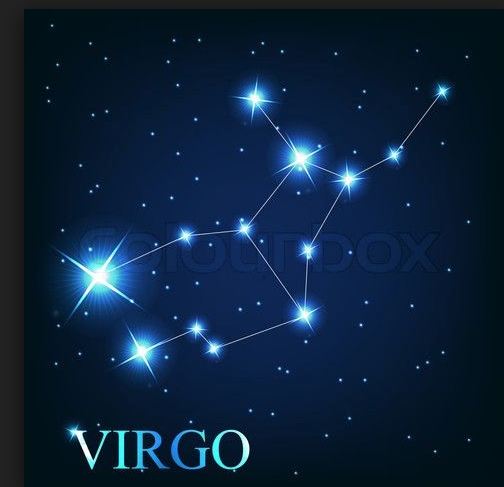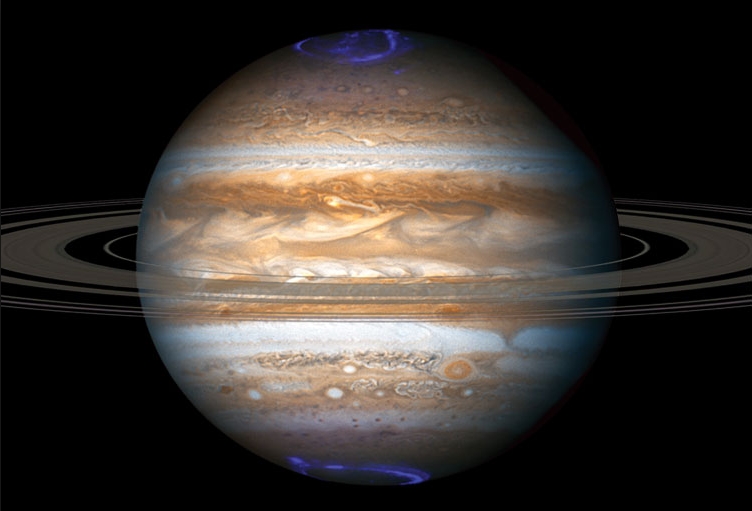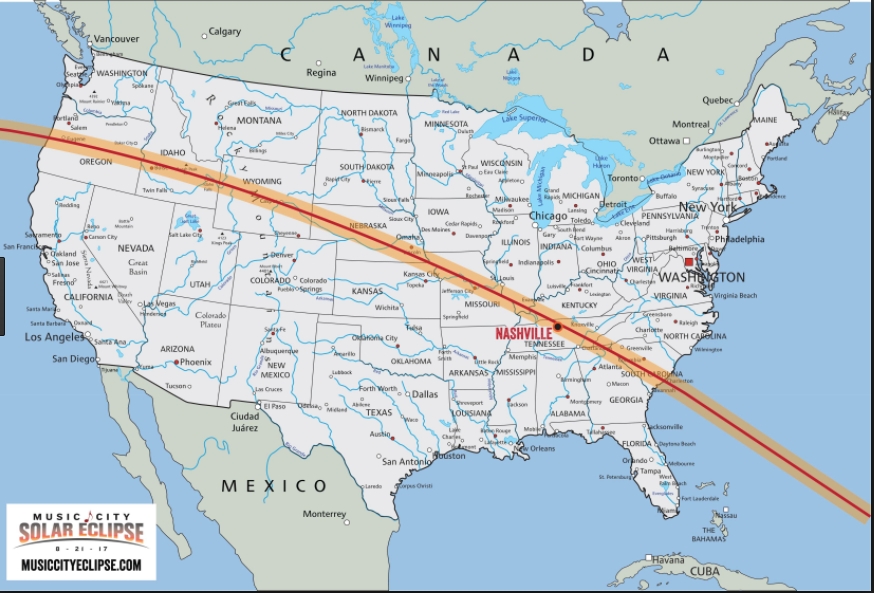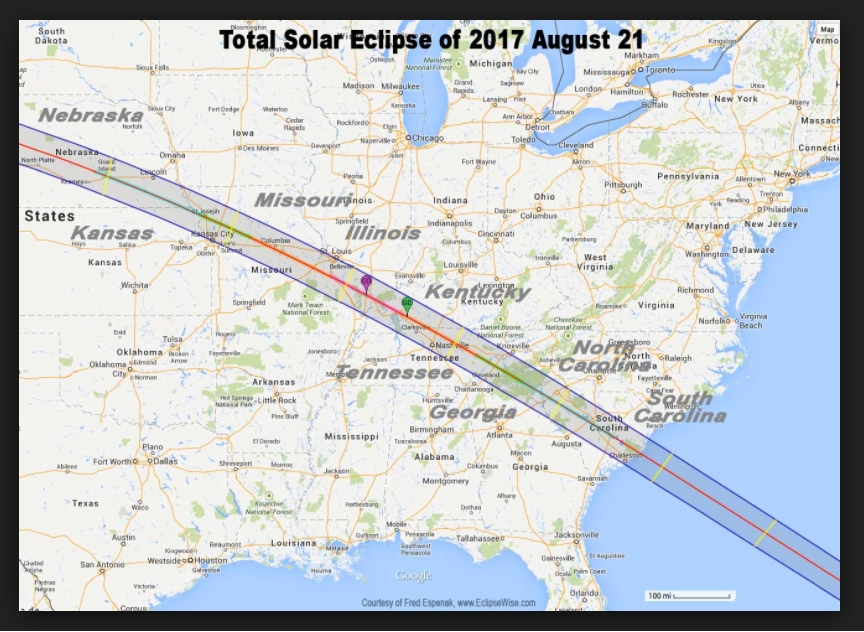
The constellation Virgo. Jupiter will be passing through Virgo in July.
Right now in full summer, the solar system’s two largest planets, Jupiter and Saturn, are clearly visible each warm, clear summer night. Meanwhile, unmistakably bright Venus gleams above the eastern horizon before sunup.
Jupiter is first to be seen at –2.0 magnitude in the southwest sky as soon as it gets dark. Jupiter appears among the stars of Virgo, and as it moves in its orbit, it will appear to inch some 3 degrees closer to Virgo’s brightest star, Spica during the month of July. The Moon will make two close passes of Jupiter through the month as well. At gibbous phase on July 1st, some 10 degrees from Jupiter; and on the 28th, at crescent phase, it will be seen just 3 degrees above the planet. Jupiter will be visible until bedtime for most of us, setting around 1 am on July 1st, and by 11 pm on July 31st.
Jupiter’s Galilean satellites (moons) will appear to form a diagonal line pointing from the planet down toward the 7 o’clock position, if we imagine a clock face, on July 18th around 11:30 pm. Binoculars or a small telescope will reveal this lineup, the moons appearing as 4 bright jewels. In order from top to bottom in the line, arranged by orbital distance from Jupiter, the moons are Io (closest); then Europa; Ganymede; and Callisto (farthest from Jupiter).
In late evening when Jupiter starts, to dip toward the southwest horizon, look southeast and Saturn will be seen well up there. At magnitude +0.2, Saturn is far and away the brightest object of any background stars above Scorpius, in Ophiuchus. On July 6th the nearly Full Moon will pass just 3 degrees above Saturn. Telescope views of Saturn continue to be rewarding for its lovely rings, colored cloud bands, and jewel-like moons.

Jupiter and its rings
Venus is at magnitude –4.2 and is out-shined only by the Sun and the Moon. Venus’ orbit carries it through the stars of Taurus all month, sliding near the Pleiades open star cluster from July 2nd to the 6th. On July 14th, look for Venus to be very close to Aldebaran, the bright red-orange star of Taurus. Venus is low in the east, but an hour before sunrise it is a full 20 degrees above the horizon and easy to see.
Next month’s total solar eclipse is starting to garner lots of attention and excitement as the August 21st date approaches. Even the US Postal Service has issued an eclipse stamp. The eclipse’s center line of totality will pass through 12 states impacting 12 million people along the line, plus all that may travel from somewhere else to be at the center line. In Maryland, the Sun will be over 80% blocked by the Moon, but eye protection will still be necessary viewing it in our State.
A minimum of 2 solar eclipses occur somewhere on Earth each year, but in any one location, the time between seeing one and then having another one in the same area is over 300 years. In the 5000 years from 3000 b.c. to 2000 a.d., 3625 years have had 2 eclipses; 877 have had three; 473 have had four, and just 25 have had 5 eclipses in a calendar year.
Totality times never last very long. The longest in that 5000 year period will occur on July 16, 2186, with a totality of 7 minutes and 24 seconds. The shortest was on February 3, 919 a.d., and lasted just 9 seconds. The August 21, 2017 eclipse will have a maximum totality of 2 minutes 41 seconds.
The Moon’s shadow is small; only some 167 miles wide, so it will cover only about 5.5 % on the total land area of the USA. Some areas along the totality path will be inaccessible to humans (the mountains of Oregon, Idaho, and Wyoming; and some heavily wooded areas in the southeastern States where the view would be terrible anyway with all the trees). I hope the raccoons use eye protection.
Personally, I have been excited about seeing this eclipse ever since I first heard about it 15 years ago! See national and regional maps below.
July moon phases: Full, July 9th; Last Quarter, July 16th; New Moon, July 23rd; and First Quarter, July 30th.





janet bowie says
Jupiter has rings (caption under photo) could the photo be saturn and it rings ?
Kat Morse says
We watched an eclipse in the skys of Oregon on July 25th, 2017. Whatever covered the moon was very large. DO YOU KNOW WHAT DID THIS ?